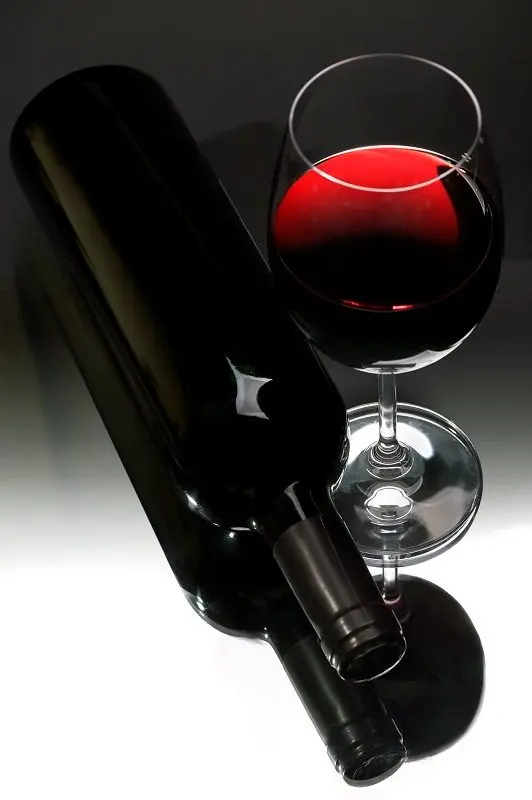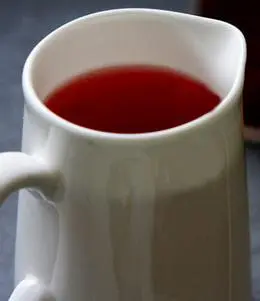Even the best wine becomes sour and unfit for consumption a few days after the cork is uncorked. This means that it has turned sour, in other words, it has turned into vinegar. The problem of souring is well known to home winemakers, as it can spoil any wine (apple, grape, cherry, etc.). We will consider the reasons for the souring of wine and preventive measures to preserve the drink.
Wine turns into vinegar when air is allowed to enter the container. Acetic bacteria, millions of which live in the fermented wine material, with sufficient oxygen and a temperature of 6-45 ° C, are activated, processing wine alcohol into water and acetic acid. Depending on the temperature, oxygen concentration and characteristics of the wine, the souring process lasts from 3-4 days to several weeks. The activity of bacteria stops when there is almost no alcohol left (in wine vinegar it is less than 0,2% by volume).
Souring can be determined by smell and taste. First, the wine has a specific pungent smell and a sour taste. After a few days, the acidity intensifies, and the fortress falls. Therefore, open wine cannot be stored for a long time, a maximum of 2-3 days in the refrigerator, tightly closing it back with a cork.

During production and storage, both store-bought and homemade wines can turn sour. To prevent this, wineries add preservatives to their drinks that block the development of acetic bacteria. The most popular preservatives are sulfites (salts of sulfuric acid). Sulfur in wine prevents the formation of acetic acid, but in high concentrations it is harmful to health.
A water seal helps protect homemade wine from air during fermentation – a special device that hermetically closes the container, but allows the carbon dioxide that is released during the fermentation process to be expelled. The finished wine is bottled, hermetically sealed with corks and stored at low temperatures.
Vinegar souring refers to the “diseases of wine”, which are “not cured.” This means that if the wine has turned into vinegar, then it is no longer possible to correct it. In the initial stages of souring (in the first few days), some winemakers try to stop the vinegar fermentation by pasteurizing homemade wine.
To do this, they heat the drink in glass bottles to 60-65°C and boil it for 20 minutes. But even a small amount of vinegar in wine spoils the taste, and there is no guarantee that pasteurization will help stop souring. In most cases, sour wine is simply discarded or made into homemade wine vinegar.
Any red or white wine is suitable for making vinegar, you can take homemade wine. It is enough to leave open a glass (very important) bottle of wine at room temperature for 2-3 weeks.
https://www.youtube.com/watch?v=HcT-j0LQicI&pp=ygUbV2h5IHdpbmUgdHVybnMgaW50byB2aW5lZ2Fy
Why does homemade wine turn into vinegar?
Becoming a good winemaker is not easy. This will take months, if not years of constant practice. Creation of different types of wines: white, red, rose and sparkling. Fermentation, maturation… But then – the pleasure of your own success. Praise from family and friends.
But there are failures even among professionals. It happens that the wine after cooking turned into vinegar. The characteristic smell, sour taste – completely discourage the desire to drink such a drink. And the long-awaited “masterpiece” is sent straight to the sink.
Souring of wine is a fairly common wine disease. It can affect any wine, including those with a long exposure. An alcoholic drink can turn into vinegar in a very short time. In this case, the entire container will become unusable.
Why does homemade wine turn into vinegar? Possible reasons, how to find out about the beginning of the process and what to do to avoid souring – read on.
Causes of souring
In order for the wine not to be disposed of, first of all, it is necessary to observe the correct technological conditions when creating it.
The main culprits of vinegar souring are bacteria. Their appearance in wine is almost impossible to exclude. Even if you carefully sterilize all the equipment, they will be on the surface of the fruit. But they can harm the drink only in two cases:
- at high storage temperature (from 15 to 40 degrees Celsius);
- with a large amount of oxygen in the fermentation tank.
Such conditions create a favorable environment for the active activity of microorganisms. In addition, they begin to multiply rapidly. Bacteria destroy alcohol molecules, starting the process of acetic fermentation. It will take about 3-6 days for the wine to turn into vinegar. It all depends on the amount of oxygen, the characteristics of the wine drink and the temperature. After this time, the volume of alcohol in the liquid will be no more than 2%.
It is not difficult to determine that vinegar is already in front of you. A thin white film forms on the surface of the wine. There is a strong odor and a sour taste. The alcohol content is almost non-existent.
This happens not only with homemade wines, but also with factory wines. Large manufacturers, as a rule, solve the problem with additives. The most commonly used preservative is E220 (sulfur dioxide). It is added to almost every bottle of shop wine. It prevents the development of microorganisms, therefore, keeps alcohol from spoilage. At home, adding such a substance to wine is not recommended. Violation of the dosage will make the alcoholic drink hazardous to health.
How to save
It is impossible to fix wine that has already become vinegar. You can save the drink only at the initial stage of acetic fermentation, in the first day or two. How to understand that the process of turning into vinegar is running? Main features:
- slight vinegar smell;
- unpleasant taste;
- light bluish film on the surface.
Noticing such alarming signals, you should not hesitate. Because bacteria won’t wait. So what needs to be done.
1. Immediately remove the wine containers to a cool place, with a temperature not exceeding 9 degrees Celsius.
2. Carefully remove the film from the surface of the liquid.
3. Pour the drink into clean, sterilized bottles. All containers must be filled to the top to avoid contact of wine with oxygen.
4. Put all the containers in a large saucepan on a wooden stand and pour water up to the level of the corks.
5. Heat the water to 65 degrees Celsius and soak the bottles in it for about 10-15 minutes. Cool down.
If pasteurization has not helped, and the wine still tastes like vinegar, it is wiser to find another use for it. Both red and white wine will make good quality vinegar. To do this, leave a glass container with sour wine open for several weeks. All this time, you should observe a temperature regime of 20-22 degrees Celsius.

Winemakers take note
In order not to encounter wine diseases, it is necessary to strictly observe all stages of wine production. Any mistake in the recipe will result in spoilage. As a result, you will translate good products and waste your energy.
A few tips for preventing wine souring.
- When making home wine, use clean and dry appliances. All containers and equipment are subject to sterilization with boiling water.
- Pick grapes carefully. Throw away rotten and moldy berries.
- Watch the quality of the water and sugar you use.
- Dilute the wort to a minimum with water. This can lower its acidity and spread bacteria.
- Use a water seal during fermentation. It prevents the penetration of oxygen into the wort and removes carbon dioxide to the outside. A rubber glove also works well as a water seal. It is put on the neck of the bottle and one finger is pierced.
- Wine should be stored in a cool room no higher than 10 degrees.
- Do not neglect any of the manufacturing steps. Violation of any point can lead to the formation of vinegar.
- Drink wine within the specified time. Homemade alcohol should be drunk one and a half to two years after it was made.
Many winemakers make mistakes. Therefore, it is worthwhile to protect yourself from vinegar poisoning in advance. An alcohol meter will help distinguish wine from vinegar essence. If the device indicates the absence of alcohol in the drink, this is clearly not wine. Be sure to remember exactly where you made a mistake and only then try again.
https://www.youtube.com/watch?v=qkCpGw327Gs&pp=ygUbV2h5IHdpbmUgdHVybnMgaW50byB2aW5lZ2Fy










الشكر كل الشكر لكم